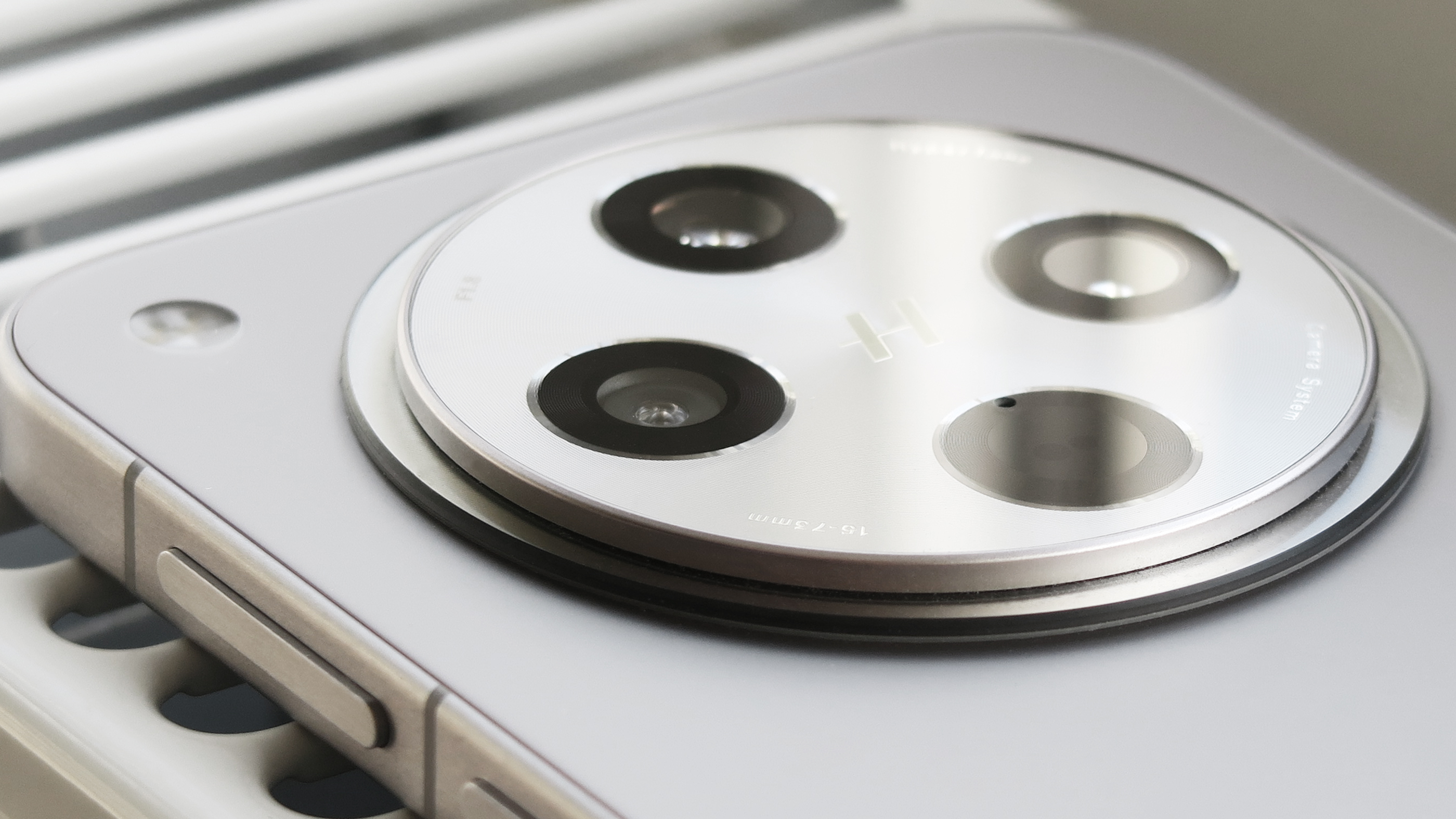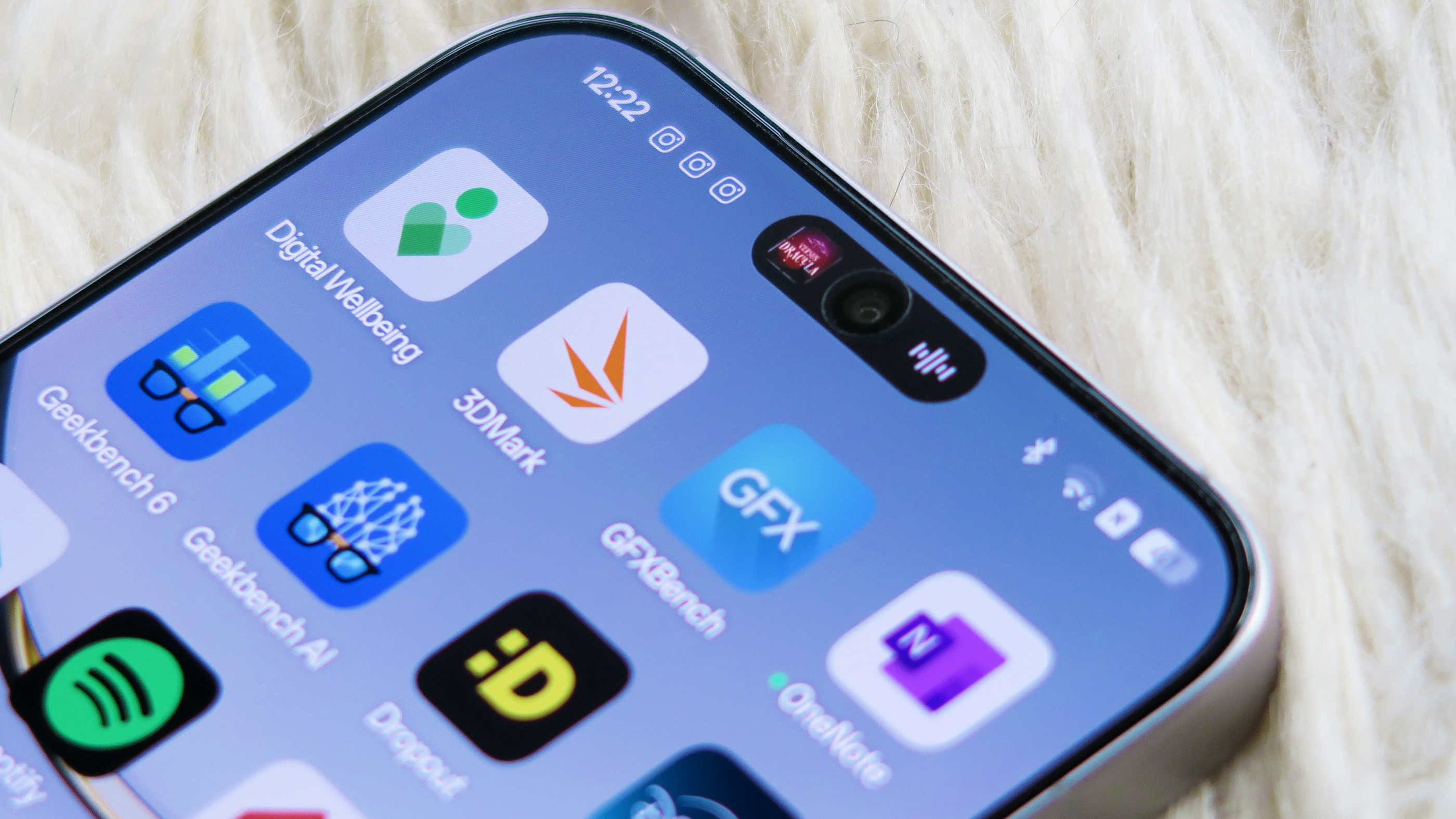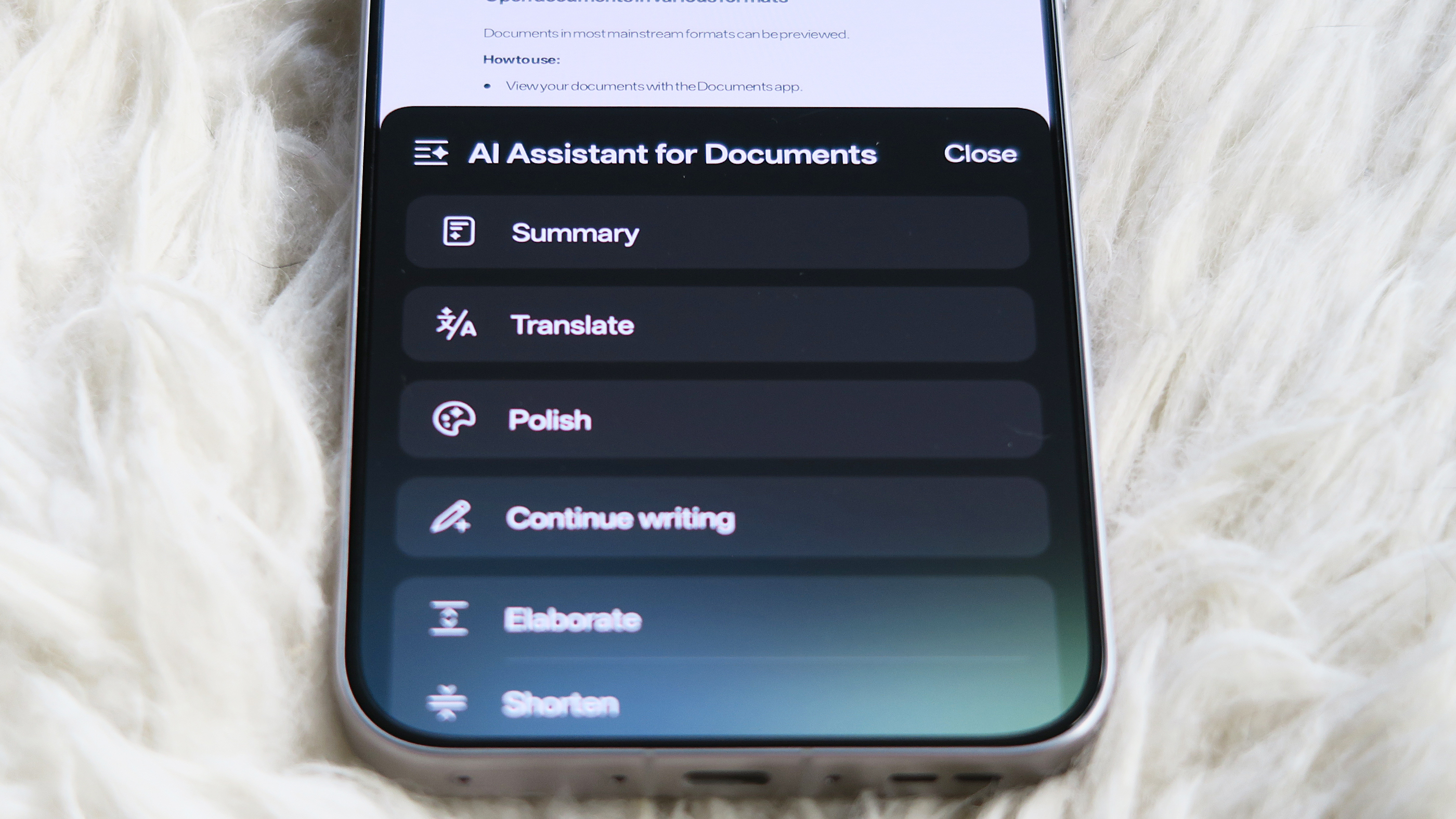TechRadar Verdict
The focus may be on the Pro version, but the standard Oppo Find X8 turns out to be an absolute powerhouse in its own right. It offers innovative design and software features, blistering performance, capable cameras, and all for the same price as the latest standard iPhone, Galaxy S, or Pixel. If only it were more readily available internationally.
Pros
- +
Excellent performance
- +
Large battery & fast charging
- +
Capable camera system
Cons
- -
Limited international availability
- -
Blatant feature lifts from iOS
- -
LTPS, rather than LTPO display
Why you can trust TechRadar
Oppo Find X8: Two-minute review
Oppo is back! The new Find X8 series is the company's return to form, at least in regions like the UK and Europe, where patent disputes and the like led to a two-year absence for the company. No longer.
The Find X8 line is Oppo's latest flagship phone family; it promises the best smartphone hardware the company can muster, paired with its latest Android-based ColorOS user experience.
While the Oppo Find X8 Pro is the headline-grabbing entry now topping the company's current smartphone portfolio, it launches alongside the more modest – but still unquestionably potent – standard Oppo Find X8. Despite a true global rollout for the X8 Pro, however, the base X8 is proving a little harder to come by outside of key Asia Pacific markets, at the time of writing.
If you can get your hands on one, though, you'll be pleased you did, as hardware-wise, it sports the same exceptional MediaTek chipset as the X8 Pro, the same cutting-edge silicon-carbon battery tech, the same rapid 80W charging, and a like-minded flagship-class display and camera setup.

There are some great details throughout the experience served up by the Find X8: a physical alert slider, newfound compatibility with an ecosystem of magnetic accessories, and hardier IP69-certified protection against water compared to your average high-end handset, to name a few key features. This is also one of the first and only Android phones that supports wireless file transfers directly with iPhones, AirDrop-style (at the time of writing).
Depending on your conscience, Oppo's clear 'appreciation' for Apple's famed smartphones runs unapologetically deep within the Find X8. Beyond the new MagSafe-like upgrade, ColorOS 15's Live Alerts capsule looks to be a direct lift of the iPhone's Dynamic Island, and you'll find wallpapers that look as though they came straight out of iOS.
Provided that doesn't put you off (or you see it as a bonus), the Find X8 otherwise presents itself as an incredibly well-rounded smartphone brimming with style, features, power, and camera prowess that should have similarly-priced rivals worried.
Oppo Find X8 review: Price and availability

- Priced from equivalent to $980 / £770 / AU$1,520
- On sale from November 21, 2024
- Limited international availability compared to rivals
Perhaps the most challenging aspect of the Oppo Find X8 is that in spite of its clean design and promising hardware and feature set, you'll struggle to find the phone on sale outside of Oppo's retail channels across the Asia Pacific region. You'll readily find the X8 on sale in markets like China, India, Indonesia, Japan, and the Philippines, but if you're anywhere else, you'll have to consider importing.
In the likes of the UK, Europe, and Australia, it's only the pricier Find X8 Pro that's available, while Oppo's presence in the US is outright non-existent.
Using the Find X8 Pro's UK pricing and the standard X8's Indian pricing for guidance, the more modest of Oppo's latest duo starts at equivalent to $980 / £770 / AU$1,520 for the 12GB RAM / 256GB storage model. Internationally, there's also a 16GB / 512GB variant, which based on Indian pricing is about 12.5% more expensive.
Pricing places it in line with the non-Pro iPhone 16, Pixel 9, and base Galaxy S24, which considering the hardware on offer, makes it a compelling alternative.
- Value score: 4 / 5
Oppo Find X8 review: Specs
| Dimensions: | 157.35 x 74.33 x 7.85mm |
| Weight: | 193g |
| Display: | 6.59-inch, 21.4:9, 2760 × 1256, 120Hz ProXDR LTPS AMOLED |
| Chipset: | MediaTek Dimensity 9400 |
| RAM: | 12GB or 16GB (LPDDR5X) |
| Storage: | 256GB or 512GB (UFS 4.0) |
| OS (at launch): | Android 15 w/ ColorOS 15 |
| Primary camera: | 50MP 1/1.56-inch Sony LYT700 sensor, ƒ/1.8, 24mm, 84º FoV w/ OIS |
| Ultra-wide camera: | 50MP 1/2.75-inch Samsung S5KJN5 sensor, ƒ/2.0, 15mm, 120º FoV |
| Telephoto camera: | 50MP 1/1.95-inch Sony LYT600 sensor, ƒ/2.6, 73mm, 33º FoV w/ 3x optical zoom + OIS |
| Front Camera: | 32MP 1/2.74-inch Sony IMX615 sensor, ƒ/2.4, 90º FoV |
| Battery: | 5,630mAh |
| Charging: | 80W wired, 50W wireless |
| Colors: | Space Black, Shell Pink, Star Grey |
Oppo Find X8 review: Design

- Straight sides, flat display
- Physical alert slider
- IP68/69-certified against dust and water
The Find X8 Pro is all pillowed glass and rounded metal, which stands in stark contrast to the standard X8. At certain angles, you'd be forgiven for mixing up the Star Grey Find X8 (pictured) with an iPhone 15 Pro or 16 Pro rendered in Natural Titanium. There's definite aesthetic overlap, with both phones sporting flat displays and straight sides, plus just enough rounding along the edges to ensure they don't feel too sharp in the hand.
The X8 stands out with its prominent 'Cosmos Ring' circular camera module, which gives the impression of four cameras on the phone's back (one simply houses autofocus sensors), so as to better tie-in with the quad-camera-toting X8 Pro's design.

Tolerances are tight (the phone boasts symmetrical 1.45mm bezels around the display), and the metal buttons along the right side of the frame have the perfect amount of give and click. The phone's available colorways are tasteful in their execution; I particularly liked the Shell Pink finish.
Not only does the Find X8 look and feel like a beautifully crafted piece of kit, but it's got some tricks up its sleeve too. For one, it continues Oppo's use of the three-step physical alert slider we were initially introduced to on OnePlus phones; this lets you toggle between ring, vibrate, and silent sound profiles.
The X8 range is also the first to support the new Oppo Mag accessory line, which allows the MagSafe-style attachment of new magnetic accessories, like a 50W AirVOOC wireless charger and a 5,000mAh power bank; both are enabled by way of a new Oppo Mag case (sold separately). Original? No. Convenient? Yes.

Durability-wise, the promise of not only IP68, but IP69 certification, means the X8 is built to withstand more than your average smartphone. When it comes to water ingress, it can handle up to 1.5m of water for 30 minutes, as well as pressurized jets of water up to 80ºC.
Add to that Gorilla Glass 7i on the front and back (creator Corning's newest mid-range toughened smartphone glass), and "Swiss SGS and Military Grade certification, tested to whole-phone drop resistance and MGJB 150.18A MIL-STD impact standards," to quote Oppo's press release, and despite its premium finish and good looks, the Find X8 is also built to be a tough nut to crack.
- Design score: 4.5 / 5
Oppo Find X8 review: Display

- Similar viewing experience across Find X8 range
- Great colors, contrast and detail
- LTPS, rather than LTPO means less dynamic refresh rate
It's nice that, beyond size, you're not really getting an inferior viewing experience by opting for the more modest Find X8 over the Pro model. Unlike Apple – who maintains a 60Hz refresh rate cap on its non-Pro iPhones – the Find X8 packs in similar ProXDR AMOLED tech as on the full-fat X8 Pro.
An impressively high 460ppi (pixels per inch) means the X8 delivers sharper visuals than the Pro model, outstanding panel-wide brightness of 1,600nits, and a whopping peak brightness of 4,500nits. Paired with the vibrancy and contrast afforded by OLED tech, not to mention Dolby Vision support, this is a great display on which to enjoy HDR content, and it copes well against bright conditions.

From a practical standpoint, Oppo's Splash Touch helps iron out erroneous screen taps, whether your fingers are wet or you're using the Find X8 in the rain, while the in-display optical fingerprint sensor is pleasingly responsive, if a little too close to the bottom bezel, from a comfort standpoint.
As far as customizing the X8's viewing experience goes, be sure to enable 'High' resolution mode to leverage the panel's native pixel count; otherwise, everything is rendered in Full HD+ out of the box. You also have the option to force 120Hz at all times (or lock things down to 60Hz), but I found that the Find X8's Auto mode wasn't afraid of prioritizing super-smooth 120Hz visuals most of the time anyway, stepping down for apps like Spotify, Instagram, and some games.

The phone's display settings include three preset color space profiles, as well as a fine-grain color temperature control. There's also automated (TÜV Rheinland-certified) eye comfort adjustment (which includes 3,840Hz PWM dimming below 70nits, beating out equivalent tech from the likes of the OnePlus 12 and Xiaomi 14 series), as well as image resolution and color upscaling, as part of Oppo's 'O1 Ultra Vision Engine'.
The only real fly in the ointment, display-wise, is the use of LTPS tech, in place of the more advanced LTPO panel used by the X8 Pro. The main effect of this is less dynamic refresh rate adjustment; moving in steps between 60Hz, 90Hz and 120Hz, where the Pro model can scale more gradually between 1Hz to 120Hz, which is designed to help improve battery performance.
- Display score: 4.5 / 5
Oppo Find X8 review: Software

- 5 years of OS & 6 years security updates
- Launches with ColorOS 15 atop Android 15
- AirDrop-like wireless file transfer support with iPhones
The company's latest ColorOS 15 (running atop Android 15) is arguably one of the snappiest user experiences around, thanks to some smart behind-the-scenes technical refinements; not to mention it's brimming with neat tricks that you won't find anywhere else.
'Share with iPhone,' as the name suggests, adds AirDrop-like wireless file transfers with the latest and best iPhones; something we haven't seen from any other Android phone maker to date. The feature is also set to become more seamless, with NameDrop-style proximity-based initiation coming in a future software update.
Speaking of updates, Oppo is promising five years of OS and six years of security update support across the Find X8 series, which, while not industry-leading, is decent, and helps up the Find X8's long-term value too.

Oppo's Theme Store is there to help redress ColorOS, with system-wide themes, as well as more granular alterations; including new fonts and wallpapers (some are paid). There's also deeper control over the look and feel of everything, from app opening speed to whether a swipe down on the home screen grants access to quick settings and notifications, a global search bar or The Shelf: a dedicated widget dashboard, cribbed from OnePlus' user experience.
The company's desire to emulate Apple's famed smartphones is a little too heavy-handed in places, though. While undeniably useful and elegant, the Live Alerts capsule is a carbon copy of the Dynamic Island introduced on the iPhone 15 Pro line, and even the default wallpapers look as though the development team copied iOS 14's homework.


Google's Gemini is the AI assistant of choice on the Find X8 series, however, Oppo offers up its own AI tool set too; with a focus on productivity and image manipulation.
Provided you're happy to use Oppo's own Documents and Notes apps, the inbuilt AI Assistant serves up one of the most comprehensive skill sets of its kind and, in testing, the results generally impressed.
You have a suite of options, like formatting rough notes, cleaning up rambling prose, refining the tone of your copy (similarly to Samsung's Galaxy AI), continuing or expanding upon your existing copy, and the option to make it more succinct too. It's not foolproof but it's a great starting point that's only going to improve with time.

Dive into the native Photos app and you'll find the AI Editor, which can upscale images, do a competent job when tasked with object removal, and has a handy reflection removal feature (which has its uses but could be better). Perhaps most impressive of all, the AI Editor also has an unblur option to rival that of the best Pixel phones.
Just note that, depending on the feature, you will need to be comfortable with off-device cloud processing.

We've also been seeing an uptick in AI image-generation tools on smartphones from the likes of Xiaomi, Google, and, most recently, Apple, with the arrival of Apple Intelligence. The Oppo Find X8 features the company's AI Studio app.
Arguably a more locked-down experience than the text-to-image generation of Google's Pixel Studio, for example, Oppo's AI Studio gives you a range of pre-defined portrait or scene scenarios to remix your images with, using AI. The former requires you to upload a photo of a person (or persons) from your camera roll, before spitting out four results at a time, while the latter simply dresses any image you give it in the trappings defined by the prompt.
It takes a few minutes to process each request and your usage is limited by an in-app currency called 'Stars'. You accrue more Stars through actions like consecutive daily logins but right now, at least, Oppo isn't charging an additional subscription or the like for any of its devices' AI functionality.
There are some fun and interesting options in there, and the results generally hit their mark. It serves as a great way to introduce people to the concept of AI image generation and the fact that it's siloed from the rest of the phone's AI-based tools feels like a considered move too, but I suspect this is just the beginning for Oppo's AI efforts.
- Software score: 4 / 5
Oppo Find X8 review: Camera

- 50MP main, ultra-wide & 3x telephoto cameras
- 32MP front-facing camera
- Hasselblad image tuning and exclusive features
Across both the Find X8 and X8 Pro, you're getting the same 50MP ultra-wide and 3x telephoto (with a compact triple-prism design and optical image stabilization, or OIS) cameras, as well as the same Sony-made 32MP front-facer. Beyond the absence of a 6x telephoto, the standard X8 also uses a smaller primary 50MP Sony LYT700 sensor, in place of the larger LYT808 leading the Pro model's camera array.
Even with the technical downgrade, the Find X8 still proves to be an impressively competent and versatile camera phone in its own right.
Oppo Find X8 camera samples










0.6x zoom

1x zoom

2x zoom

3x zoom

6x zoom

120x zoom

0.6x zoom

1x zoom

0.6x zoom

1x zoom

2x zoom

3x zoom

6x zoom

0.6x zoom

1x zoom

2x zoom

3x zoom

6x zoom

120x zoom

0.6x zoom

1x zoom

2x zoom

3x zoom

6x zoom

60x zoom

120x zoom

Front camera

Front camera w/ Portrait mode
Oppo knows how to make exceptional camera phones, most notably with last year's Oppo Find X7 Ultra; one of the best camera phones of the moment. The company's partnership with famed camera brand Hasselblad continues on the Find X8's HyperTone system too; with custom image processing, portrait mode tuning, and the brand's signature ultra-wide X-Pan capture mode.
There's a consistency across the rear sensors that grants confidence when shooting with the Find X8, which isn't guaranteed from certain rival devices. Low noise, impressive low light performance and solid dynamic range (even from the ultra-wide), mean you're unlikely to find fault with stills captured in most conventional shooting scenarios.
White balance did sometimes wobble, but colors were otherwise faithfully captured; with nice skin tones and excellent subject separation in portrait shooting (you can also adjust the virtual aperture after capture, to alter the amount of bokeh on display).

The ultra-wide takes over when capturing macro shots, while the AI Telescope Zoom feature activates between 10x and 60x, filling in the holes in image data competently, especially in well-lit scenes. The only confusing aspect of the X8's zoom is that the interface still gives you a 6x magnification button, even though results are simply cropped; unlike on the X8 Pro, with its 6x secondary telephoto sensor.
The 32MP selfie snapper is functional, with that HyperTone Image Engine doing a lot of the heavy lifting for what is otherwise an uneventful sensor. Front-facing Portrait mode does, at least, demonstrate the same great image segmentation around a subject's hair and clothing, for example.

Oppo augments the photography experience with extras like Lighting Snap; its take on an advanced 7fps burst mode, where every shot captured when you hold down the shutter button gets run through the full HyperTone imaging pipeline, delivering far less blur than you'd get from the likes of Samsung's Galaxy S24 Ultra under the same conditions.
If you're looking for a phone that captures good video, the Find X8 also boasts great 4K 60fps recording in Dolby Vision across all of the phone's sensors (including the selfie snapper).
- Camera score: 4 / 5
Oppo Find X8 review: Performance

- 3nm MediaTek Dimensity 9400 chipset
- Up to 16GB LPDDR5X RAM + RAM Expansion up to 12GB
- Up to 512GB UFS 4.0 storage (outside of China)
The production timeline of the Oppo Find X8 series meant that both phones were ready for market before Qualcomm's newest flagship mobile chipset – the Snapdragon 8 Elite – was ready to be integrated into the phones' development cycle. Instead, Oppo opted for MediaTek's latest Dimensity 9400 SoC, paired with up to 16GB of RAM and 512GB of fast storage, and the results are pretty stellar.
In artificial benchmarking, the Find X8 proves to be one of the highest-performing entrants I've ever tested, across the likes of Geekbench 6 and GFX Bench. Real-world multitasking and gaming performance are understandably excellent too, with titles like Zenless Zone Zero defaulting to 'high' graphical settings. That said, the phone's comfortable being pushed much further.
Although the official numbers state that TSMC's second-gen 3nm process grants the Dimensity 9400 35% faster CPU performance and 40% greater CPU efficiency, 42% faster GPU performance and 44% greater GPU efficiency, and 35% greater AI efficiency, the tangible benefits are that the Oppo Find X8 is equipped to handle anything and everything today's mobile experience asks of the average smartphone with aplomb, whilst also being incredibly well future-proofed.
Oppo reportedly worked with MediaTek on its Trinity Engine to better optimize how the chipmaker's hardware interfaced with its devices' user experience and features.

What's more, a revised cooling system, which includes a new thermal gel between a reworked graphene sheet and vapor chamber, means sustained performance – especially when gaming – is superb. In a 30-minute session against an otherwise similarly-specced Snapdragon 8 Elite device I had to hand, the Find X8 delivered the more consistent performance, with less heat build-up and fewer stumbles.
While hard to test for, Oppo also promises that the X8's triple antenna design has optimized for high-performance gaming over WiFi.
- Performance score: 5 / 5
Oppo Find X8 review: Battery

- 5,630mAh battery
- 80W wired + 50W wireless charging
- The latest silicon-carbon battery technology
From a technical standpoint, the Find X8's battery is pretty state-of-the-art. Switching from traditional lithium-polymer to silicon-carbon (or Si-C) has allowed Oppo to install a significantly more dense power plant than would otherwise be possible within the phone's dimensions. The result is a whopping 5,630mAh cell in what remains an impressively unobtrusive sub-200g device.
With a battery capacity larger than the likes of the mighty Galaxy S24 Ultra's – well on its way to Asus ROG Phone levels of capaciousness – a consistent peak screen-on time of 7 hours provides more than a day's use without breaking a sweat, even if that is less than expected, going by the sheer amount of power the battery promises to hold.
Where Oppo's phones stand apart from usual suspects, like Apple, Google, and Samsung, is with fast charging. The Find X8 can refill from zero to 65%, charge in 30 minutes flat, and fully replenish in under 55 minutes, thanks to support for the included 80W 'SuperVOOC 2.0' charger; that's almost twice the wattage of the next-fastest charging phone from that aforementioned trio (at 45W).
What's more, the X8 supports up to 50W wireless charging with a compatible charger too.
- Battery score: 4 / 5
Should you buy the Oppo Find X8?
| Attributes | Notes | Rating |
|---|---|---|
| Value | Competitively priced but hard to find. | 4 / 5 |
| Design | Premium looks, unique features and hardier than your average premium phone. | 4.5 / 5 |
| Display | Stunning visuals, only really held back by the lack of LTPO tech. | 4.5 / 5 |
| Software | Brimming with great features, even if some feel as though they've come wholesale from iOS. | 4 / 5 |
| Camera | A superb set of camera features for a non-Pro flagship. | 4 / 5 |
| Performance | Astoundingly good performance, helped by thermal and software improvements. | 5 / 5 |
| Battery | A large battery and fast wired and wireless charging. I expected a single charge to last longer, considering. | 4 / 5 |
Buy it if...
You want an Android that behaves like an iPhone
Oppo isn't being all that subtle about some of the inspiration behind the Find X8's design and features, but at least it's an incredibly good imitation, with bonus functionality you don't get from Apple's phones.
You want an understated gaming phone
Top-tier performance that doesn't buckle under pressure (or extended use) makes the Find X8 a pretty great phone for gaming, even if it lacks some of the features and trappings associated with this particular smartphone sub-category.
Don't buy it if...
You aren't willing to import it
For as good a phone as the Find X8 is, it's hard to come by, outside of a select run of Asia-Pacific markets, so unless you're willing to import, you'll likely go for a more accessible device in your region.
You want that secondary telephoto sensor
The Find X8 has a great camera that relies on AI to grant a zoom range beyond its physical means, but the X8 Pro gets that fourth telephoto sensor for superior optical zoom.
Oppo Find X8 review: Also consider
Apple iPhone 16
The Find X8 takes a lot of cues from Apple's iPhones, but the newest iPhone 16 comes in a broader range of colors, supports a far larger accessory ecosystem and is more widely-available, globally; with a similar price and similar performance.
Google Pixel 9
Google's latest 'non-Pro' entry packs a brighter display, protected behind tougher Gorilla Glass, whilst also offering up a cleaner user experience with longer software support.
| Header Cell - Column 0 | Oppo Find X8 | Apple iPhone 16 | Google Pixel 9 |
|---|---|---|---|
| Price (at launch): | Equivalent to $980 / £770 / AU$1,520 | From $799 / £799 / AU$1,399 | From $799 / £799 / AU$1,349 |
| Dimensions: | 157.35 x 74.33 x 7.85mm | 147.6 x 71.6 x 7.8mm | 152.8 x 72 x 8.5mm |
| Weight: | 193g | 170g | 198g |
| OS (at launch): | Android 15 | iOS 18 | Android 14 |
| Display: | 6.59-inch 2760 × 1256 120Hz LTPS AMOLED | 6.1-inch 1179 × 2556 60Hz AMOLED | 6.3-inch 1080 × 2424 120Hz LTPO AMOLED |
| Chipset: | MediaTek Dimensity 9400 | Apple A18 | Qualcomm Snapdragon 8s Gen 3 |
| RAM: | 12GB, 16GB | 8GB | 12GB |
| Storage: | 256GB, 512GB | 128GB, 256GB, 512GB | 256GB, 512GB |
| Rear Cameras: | 50MP wide, 50Mp ultra-wide, 50MP 3x telephoto | 48MP wide, 12MP ultra-wide | 50MP wide, 48MP ultra-wide |
| Front camera: | 32MP | 12MP | 10.5MP |
| Battery: | 5,630mAh + 80W wired, 50W wireless, 10W reverse wireless | 3,561mAh + 20W wired, 25W wireless, 4.5W reverse wired | 4,700mAh + 27W wired, up to 15W wireless, 4.5W reverse wired |
How I tested the Oppo Find X8

- Review test period = Three weeks
- Testing included = Everyday usage, web browsing, social media browsing, video streaming, gaming, photography
- Tools used = Geekbench 6, Geekbench ML, GFX Bench, native Android stats
I used the Oppo Find X8 as my main device for almost a month. It was my main camera, my means of checking social media, and my go-to phone for gaming for the duration of the review period.
I used a gamut of industry-standard benchmarking apps to test qualities like CPU and GPU performance, while also keeping tabs on battery drain (with timed tests for things like streaming Netflix and gaming at a fixed brightness), and screen-on time too.
I used the included in-box charger as the sole means of recharging the phone, and tried all the AI-supported features that Oppo has added here, plus all the key features found within the wider ColorOS user experience.
As a reviewer with 13 years of experience, and having reviewed Oppo phones for years, I felt confident assessing and scoring the Oppo Find X8 relative to other phones out right now, and in the context of the wider smartphone market.
Read more about how we test
First reviewed December 2024

Alex joined as TechRadar's Senior Phones Editor in June 2022, but brings over a decade's worth of experience to the role, with an expertise in smartphones, tablets and wearables. He's covered keynotes hosted by the biggest brands and attended the launches for some of the most influential mobile products of the last few years. His experience was amassed at some of the most reputable consumer technology publications out there, including GSMArena, TechAdvisor and Trusted Reviews.
